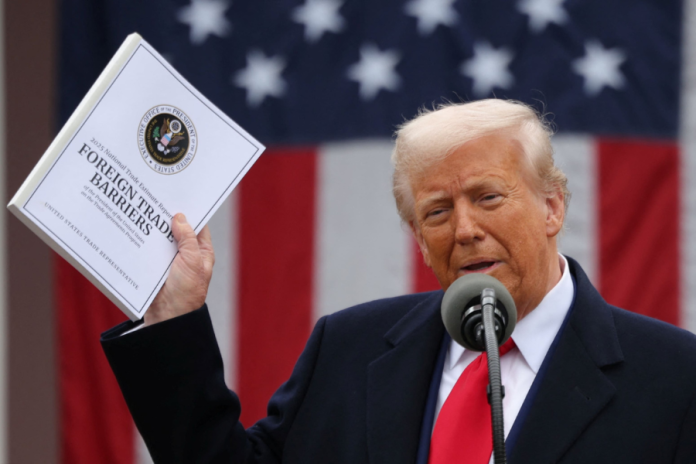Trade negotiations between the United States and China have hit a slowdown, according to US Treasury Secretary Scott Bessent, just weeks after both countries agreed to ease tariffs as part of a temporary truce.
Speaking to Fox News on Thursday, Bessent said the discussions had “stalled a bit” and emphasized that progress would likely require direct involvement from both President Donald Trump and Chinese President Xi Jinping. “Given the complexity and scale of the negotiations, it will take the two leaders stepping in,” he noted.
Earlier this month, the US and China reached an agreement in Switzerland to de-escalate their ongoing trade conflict. The deal included plans to eliminate certain tariffs and suspend others for 90 days, with a deadline set for May 14.
Under the agreement, the US reduced tariffs on Chinese imports from 145% to 30%, while China cut retaliatory duties on American goods from 125% to 10%. The Trump administration has long used tariffs as a tool to promote domestic manufacturing and leverage better trade deals, arguing that such measures protect American industries and generate tax revenue.
However, the trade strategy suffered a blow on Wednesday when the US Court of International Trade ruled that President Trump had overstepped his authority in imposing some tariffs. While the White House has appealed the decision—temporarily reinstating the duties—legal uncertainty clouds the future of Trump’s tariff agenda.
Bessent reiterated optimism about the talks continuing, adding that a presidential phone call with Xi could take place soon. “I’m confident China will re-engage once President Trump signals his priorities,” he said, highlighting the “very good relationship” between the two leaders.
Meanwhile, trade discussions with Japan are ongoing in Washington, with Bessent describing some potential deals as “very close” while acknowledging others remain “more complicated.”
Despite the temporary reprieve and ongoing dialogue, analysts suggest that recent legal setbacks could make other countries more hesitant to pursue trade agreements with the US.
2. Trump Tariff Ruling: What It Means for US Trade, Revenue, and Global Impact
By Ben Chu, BBC Verify
14 hours ago
President Donald Trump’s sweeping tariff policies are now under legal threat after a federal trade court ruled that he lacked the authority to impose certain duties under the 1977 International Emergency Economic Powers Act (IEEPA).
The court’s decision strikes down several recently introduced tariffs, including those aimed at curbing fentanyl smuggling from Canada, Mexico, and China, as well as the so-called “Liberation Day” tariffs—a universal 10% levy on all imports announced in April.
However, tariffs on specific sectors—such as steel, aluminum, and automotive parts—remain intact, having been enacted under separate legislation.
While a federal appeals court has granted a temporary stay, allowing the disputed tariffs to remain in place for now, the broader future of Trump’s trade strategy remains uncertain.
How Much Revenue Is at Stake?
According to US Customs data, tariffs imposed under IEEPA have already generated substantial revenue during the 2025 fiscal year (October 2024 to April 2025):
- Fentanyl-related tariffs: $11.8 billion
- Liberation Day tariffs (10% baseline): $1.2 billion
- Steel and car part tariffs (not affected): $3.3 billion
- Legacy tariffs on China (pre-IEEPA): $23.4 billion
Although some tariffs remain untouched by the court ruling, analysts at Goldman Sachs estimate that the invalidated measures would have generated nearly $200 billion annually.
Capital Economics projects the ruling could lower the average US external tariff from a projected 15% this year to 6.5%—still significantly higher than the 2.5% average in 2024 and the highest since 1970. A 15% average would have been the highest since the 1930s.
Implications for Trade Negotiations
The ruling may also undermine the US’s negotiating position. Trump had used the threat of tariffs—particularly those introduced in April—as leverage in trade talks. The European Union, for instance, entered intensified negotiations after Trump threatened a 50% tariff under IEEPA.
Now, countries like the EU, Japan, and Australia may wait for the court appeals process to conclude before agreeing to any concessions.
What It Means for Global Trade
Initial reactions from global stock markets suggest that investors see the ruling as positive for global trade. However, the uncertainty surrounding the White House’s next legal steps could create more instability.
Experts suggest Trump could seek alternative legal paths, such as invoking Section 301 of the Trade Act of 1974, which permits tariffs in response to unfair trade practices. He has also floated new sector-specific tariffs targeting industries like pharmaceuticals and semiconductors.
The World Trade Organization (WTO) has already downgraded its forecast for global trade in 2025, projecting a 0.2% decline instead of earlier expectations of 2.7% growth, largely due to Trump’s tariff policies.
If the court’s decision holds, it could offer a modest boost to global trade by reducing barriers. Still, the prevailing legal and policy uncertainty continues to cast a shadow.
“Trump’s trade war is not over—far from it,” concludes Grace Fan, an analyst with TS Lombard.

